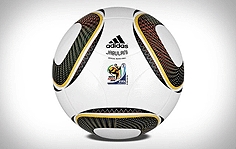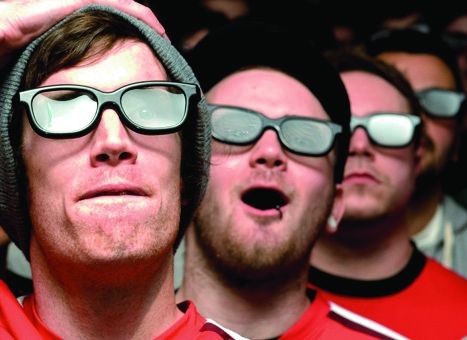FIFA has steadfastly refused to embrace technology, particularly when it comes to goal line technology.
Tennis, rugby and even that most traditional of games, cricket, have welcomed the use of video replay to help umpires and referees, Hawkeye to measure line calls or audio and infra red cameras to measure ball contact with the bat. And football? All we get is extra linesmen (sorry, assistant referees) behind the goal on special occasions.

Someone asked me recently what I thought would happen if FIFA was to have a sea-change and wholeheartedly accept technology. If the rules were taken away, how far could technology take football and how would the game look in a decade’s time?
Ball tracking technology with predictive capabilities exists in the form of Hawkeye and has been effective in both tennis and cricket
Firstly, how can we help referees? They rely on their wits, player psychology and the (often vain) hope that they won’t encounter a situation that only repeated video replay can show. The FIFA argument about line calling systems in football is long and tortuous and immersed in political ideology rather than logical fact. So, what is possible? The simplest system would have three or four slow motion videos embedded in the frame of the goal which could immediately tell if the ball had crossed the line. This would be the easiest route for FIFA who could start with just replays with one of our extra officials as an arbitrator. This still relies on subjective assessment of the position of the ball in relation to the line but at least the referees have the same technology as the audience rather than none at all. This can be done now.
Ball tracking technology with predictive capabilities exists in the form of Hawkeye and has been effective in both tennis and cricket and could certainly be used to judge whether the ball is over the line or not. The compromise here is whether to allow automatic line calling or to have a human override to ensure the correct decision. This can also be done now.

An alternative tracking system developed by Cairos used a sensor in the ball to detect whether the ball crossed an electro-magnetic field in the goal. FIFA could go a step further and use a sensor in the ball to allow it to be tracked across the pitch. The sensor would include accelerometers, rate gyros, magnetometers and even temperature and humidity. Continuous recording of ball position would give FIFA, the professionals and the public huge amounts of data to play with. Just imagine the tables in the back of the Sunday papers.
Come on FIFA, the world is leaving you behind. Give the world’s football lovers what they want for a change.
These sensors are already being used in shirts to measure position, speed, acceleration and rotation; in fact everything you need to know about where the player is and what the player is doing. Sensors also have ECG to measure heart rate to give calorific expenditure and heart rate variability which could indicate psychological state and over exertion. If we really wanted to, lightweight HD cameras in the shirt collars could give live feedback from the player’s point of view although audio might be limited until the player’s can play without swearing. In short, we could know what the players see, where they are, where they aren’t, how they’re feeling and whether they’re trying hard enough.

What about the TV audience? High definition TV is here, as is 3D TV. And so is augmented reality. So how about a live football match appearing on a coffee table like a Subbuteo game that had just come to life? Imagine holding a camera-enabled touch screen (such as a smartphone or iPad) in front of you; the camera detects a known shape on your table such as a flat sheet of paper or the table itself.
The paper appears on the iPad screen but with the amazing addition of a live 3D football match, with players, referees, ball and all. Moving around the sheet gives you a new view of the football match and moving closer zooms you in. You could even view in slow motion 3D the goal line images and see for yourself on the coffee table if the ball really did cross the line. Better still, you could vote on whether it was a goal and the referee could use yours and the other millions of pairs of eyes to make the decision.
So come on FIFA, the world is leaving you behind. Give the world’s football lovers what they want for a change.





Red Bull makes hydrogen fuel cell play with AVL
Formula 1 is an anachronistic anomaly where its only cutting edge is in engine development. The rules prohibit any real innovation and there would be...